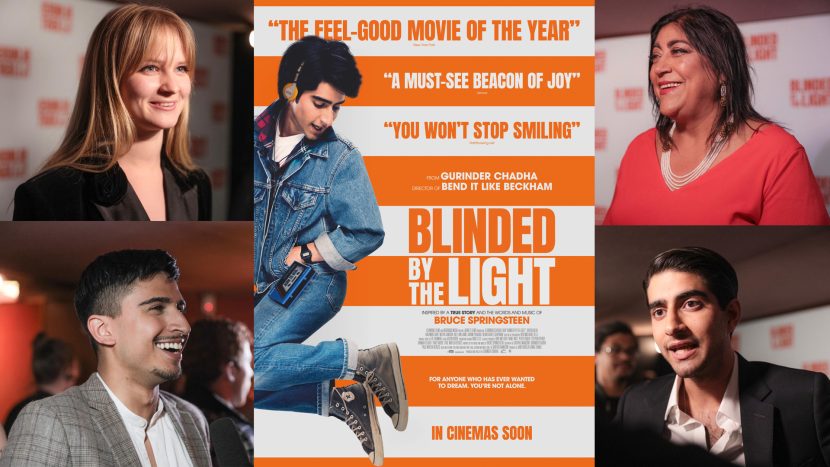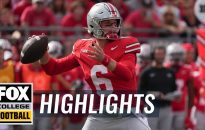Sensing that I was getting retinal damage driving at night, I wondered if I was developing cataracts. My optometrist assured me that was not the case, so I started flashing people to dim their high beams, only to find that their high beams were even brighter. Eventually, I figured out that the problem was the […]


Sensing that I was getting retinal damage driving at night, I wondered if I was developing cataracts. My optometrist assured me that was not the case, so I started flashing people to dim their high beams, only to find that their high beams were even brighter. Eventually, I figured out that the problem was the LED headlights on newer cars. They are extremely bright, and there are so many of them! Newer pickups are the worst, as their LED headlights seem to be on the same plane as both my eyes and the rear-view mirror in my Porsche 911. How can this be legal?
Help is here
An internet search led me to the Soft Lights Foundation, which is dedicated to stopping the spread of blinding LED headlights. I happily signed its online petition, which now has over 64,000 signatures. Soft Lights was created by Mark Baker, who was happy to speak with “Legal Files” about this effort.
According to Baker, the core of the problem is an inexplicable case of government inaction. The primary regulator here is the National Highway Traffic Safety Administration (NHTSA), which clearly has the authority to do something about this. For whatever its reasons, NHTSA has done nothing about the spread of LED headlights; there are no applicable standards or limits that apply specifically to them. With this void of government regulation, the automakers have acted freely, and an aftermarket LED headlight-conversion industry has also developed.
The American Automobile Association (AAA) and the Insurance Institute for Highway Safety (IIHS) have both chimed in, claiming that the problems with LED headlights are simply that they are misaligned and that they seem brighter because they appear whiter than halogen headlights. AAA and IIHS claim that forthcoming Adaptive Driving Beams, which automatically dim high beams when they sense oncoming cars, will solve the problems.
I don’t necessarily believe this. There is no way that all of these headlights are misaligned, and real-world experience is that they cause problems no matter what the approaching angle might be. Further, automatic dimming isn’t going to help one bit, as the LEDs blind oncoming drivers even when they are on low beam.
More harms
LED headlights are recognized as harmful to certain individuals (more on that below), causing photobiological, neurological and psychological difficulties. Federal law requires NHTSA to maintain a liaison with the Food and Drug Administration to test and evaluate LED headlights, to ensure that LED vehicle headlights are safe. However, NHTSA has not done that and does not appear to have any plans to do so.
Baker and Soft Lights have made numerous efforts to compel some level of compliance from NHTSA. They have submitted multiple regulatory petitions to NHTSA to publish performance standards for LED headlights, but all those petitions have either been denied or ignored. In September 2024, Baker filed a lawsuit against the FDA and NHTSA to compel these agencies to establish a liaison, test and evaluate LED headlights, and set necessary limits on LED headlights to protect public health, safety, and civil rights. The government’s response is due in mid-December.
Most recently, Baker has given advance notice to Ford Motor Company and NHTSA, as required, that he will be filing another lawsuit soon. It will claim that Ford has received sufficient notice about the problems with LED headlights that its obligation has been triggered under federal law to notify its purchasers of safety defects in their vehicles. Further, the suit will assert that NHTSA has failed in its obligations to study and establish standards for LED headlights and should be directed to do so now.
The science
Baker gave “Legal Files” an excellent primer on why LED headlights are so dangerous. First off is their color temperature. They operate well into the blue light spectrum — they may appear bright white, but they are technically blue — with a Correlated Color Temperature of 6,500 degrees Kelvin. Our eyes and bodies are especially sensitive to blue light. Tungsten-filament bulbs are generally 2,700 degrees Kelvin, and halogens are generally in the 2,900–3,000 degrees Kelvin range. In those ranges, their color is more yellow and doesn’t create the same problems.
Intensity and directionality are serious problems. LED headlights appear brighter because they are brighter. They are also designed to emit a directional beam of focused light which does not disperse gently over distance, so even from far away, LED light is extremely intense. LED light is exceedingly dense in the middle of the beam, but the density is near zero at the edges. This is referred to as “spatial non-uniformity of energy,” where more energy is emitted in the center of the light beam than the wider and edge areas. Traditional light sources radiate the light outward and it is dispersed more broadly. Interestingly, NHTSA has no intensity standard for the area of the light beam directly in front of the headlight. The intensity standards apply only to the areas not directly in front of the headlamp.
Another problem is that the low beam is created by a process called pulse-width modulation. The intensity of the beam is cut electronically and by flickering it (“square wave flicker” and “digital flashing”), which creates a pulsing effect that is particularly troublesome to some people.
Overly bright LEDs cause what is known as inattentional blindness or the “Las Vegas Effect,” a visual field so polluted by distracting glare that the brain has a hard time keeping focused on the important subjects like pedestrians in a crosswalk.
The combination of these problems causes psychological difficulties for people who suffer from autism. “But it’s even worse for those who suffer from epilepsy,” Baker adds. “These lights can cause them to have seizures.”
One epilepsy sufferer shared with the Soft Lights Foundation that he has had three seizures from super-bright LEDs in grocery stores, and that LED headlights bother him as well, causing him to drive at night with sunglasses on! Baker adds that one man who stays in contact with him blames LED lights for his suicidal tendencies.
Baker is reluctant to say which vehicles are the worst offenders, as he has not done any research that would enable him to identify the worst of the worst. He will say, however, that many people tell him that they have particular scorn for Teslas. Pickups are also fairly notorious. NHTSA headlight height limits are not based on the lights’ distance from the ground, but on the height of the vehicle. As pickups have grown larger, that has moved their headlights higher off the ground, and the light from their LEDs into the eyes of other drivers.
Hope for change
Baker is hopeful that the recent election will have a positive effect on this situation. Many of the key agency players are likely to change with the new administration and their replacements may take a different stance on this problem, leading to hope that some progress will be made in 2025.
Baker says that there are two ways that people can help with this battle. First, you can sign the petition at the Soft Lights Foundation website (www.softlights.org), asking the government to do something about overly bright headlights. There is also a link where you can contribute to the cause, if you are inclined to do so.
Second, recognize that the blinding LED headlights are not the fault of the oncoming driver, but a systemic failure on the part of the auto industry and the government. There is nothing the other driver can do about it, so don’t retaliate with your high beams (or worse). Instigating acts of road rage over LED headlights, as some have done, won’t help solve anything. ♦
John Draneas is an attorney in Oregon and has been SCM’s “Legal Files” columnist since 2003. His recently published book The Best of Legal Files can be purchased on our website. John can be contacted at [email protected]. His comments are general in nature and are not intended to substitute for consultation with an attorney.














